BERYL

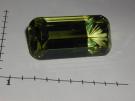

 Characteristics of the mineral.
Characteristics of the mineral.
Crystals are hexahedral prisms. Silicate of beryllium and aluminum Be3Al2Si6O18, which has a very diverse color. Jewelers call beryl only yellow and pink varieties. The color of the stones depends on the impurities of the compounds of magnesium, iron, chromium, manganese. Beryllium-free impurities are colorless. Beryls in the narrow sense of this term are usually light-greenish and bottle-colored versions of these stones. Color greenish-white, yellow, yellowish-green, other color varieties have their own names: transparent dense green chrome-containing - emerald, blue (greenish blue) - aquamarine, golden yellow with uranium impurities - heliodorus, pink cesium-containing - sparrowite (morganite ), Very rare red - bixbit, colorless - rosterite (goshenit), dark blue maxis-beryl (unstable color). Precious varieties: emerald (dense green), aquamarine (blue), heliodor (golden), sparrow (pink).
The most typical beryls are opaque, cloudy light-green beryl of pegmatites. They are from a few centimeters to whole meters, their mass sometimes reaches several tons. They do not represent jewelry value. Non-beryl is of great importance. This is the main ore of beryllium, widely used in modern technology. In addition, today, non-yellow pale greenish beryl, in which a thin layer of synthetic emerald is embedded on top, was actively inserted into jewelry from silver, giving them away for inexpensive emeralds. Widely used are irradiated or heat-treated beryl. Greenish beryls with cracks can be impregnated with oil dyes for the purpose of issuing them for emeralds, for testing it is sufficient to use any household fat thinner (washing powder or liquid for washing fattyware in cold water).
One of the most expensive beryl is the emerald dense green, that is, beryl, dyed with chromium. It differs from ordinary green beryl in that green beryl is pale, its color is created by impurities of iron or vanadium rather than chromium. The hardness of beryl varies from 7.5 to 8, and the emerald is somewhat softer than the other varieties. Like most precious stones, beryl is very fragile and easily cracked and cracked. Stony, opaque because of cracks stones are called moss.
Noble beryl as a jeweler stone has been used since ancient times due to the unique beauty of the color of its varieties. The structure of beryl consists of the rings [Si6O18], connected through the atoms Be and Al. The rings form an elongated column along the sixth-order axis. Microchannels in a beryl crystal can contain water molecules, cesium and sodium ions. Beryl crystals are often characterized by the correct shape. In water, beryl is insoluble, stable in acids (except hydrofluoric). Beryl is the most common mineral of beryllium. Deposits of jewelry beryl are known in Brazil, Mozambique, South Africa, Madagascar, Namibia, USA, Sri Lanka. There are also in the CIS. Thanks to its varied and beautiful color, transparency and brilliance, beryls have long enjoyed great popularity.
For them, mainly used stepped (emerald) or classic diamond cut, the treatment must take into account pleochroism. In the past, foil was often used to enhance the coloring of the cut stone for beryl. Opaque stones and stones with asterism or cat-eye effect are processed in the form of cabochons. Large crystals, for example aquamarine, are used to make various large-sized figures.
Colorless jewelry beryls are rare. Of great practical importance as jewelry stones, colorless beryl have no. In general, they are interesting for collectors.
Magic properties of stones.
All beryl are active conductors of energy and cosmic influences, and, as a result, powerful defenders. That is, beryl are used as talismans, amulets and amulets, while possessing great healing powers. Stones attract luck, well-being and wealth to their owners, guarding the house and clearing the space of evil entities and people, making way for achieving goals free of negative influences. If you wear a beryl for a long time, then they correct the intricate situations and generally significantly improve the life of the owner. They incline the powers that be on the side of their master, open all doors, fulfill their desires. Beryl is a sacred stone that connects the master with the whole universe, revealing secrets, contributing to spiritual perfection. He releases the owner from dirt and impurity, all the bad things that are "acquired" by mankind, returning the master to the sources of light. Beryl is a super-energetic stone, and in emerald these properties are most powerful. Directly beryl and emerald are associated with the constellation Ursa Major and the North Star; These stones know all the secrets of the universe and the history of mankind from the times of Paradise to modern times.
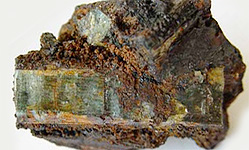
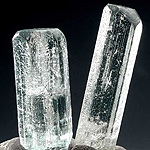

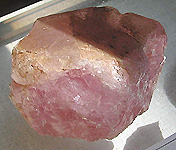
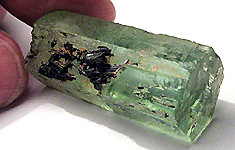
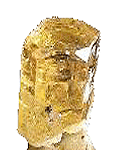
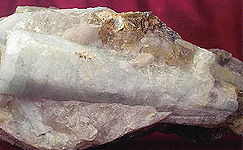
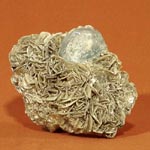
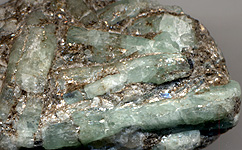
Poisonous and radioactive dangerous stones and minerals
** - poisonous stones and minerals (mandatory check in the chemical laboratory + explicit indication of toxicity).
** - radioactive stones and minerals (mandatory check on the standard dosimeter + ban on open sales in the case of radioactivity over 24 milli / g / h + additional measures of population protection).
All rare stones are subject to mandatory inspection at the standard dosimeter for the permissible level of radiation and in the chemical laboratory for the absence of poisonous and evaporating components that are dangerous to humans and the environment.


Comments
When commenting on, remember that the content and tone of your message can hurt the feelings of real people, show respect and tolerance to your interlocutors even if you do not share their opinion, your behavior in the conditions of freedom of expression and anonymity provided by the Internet, changes Not only virtual, but also the real world. All comments are hidden from the index, spam is controlled.